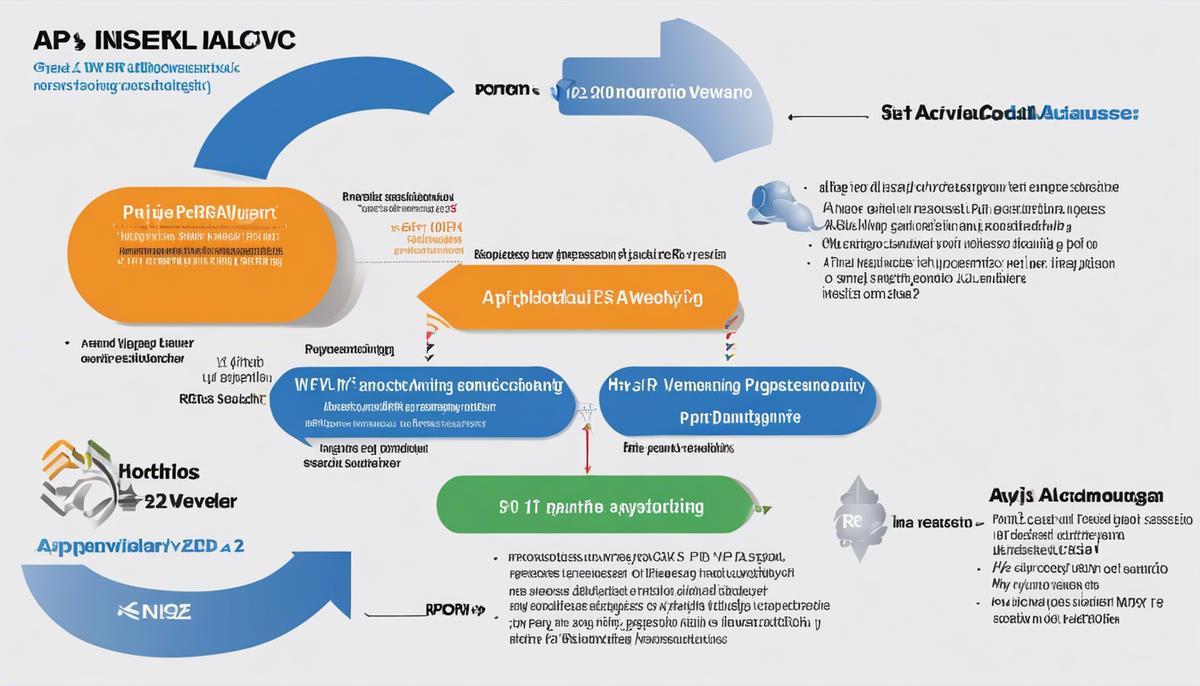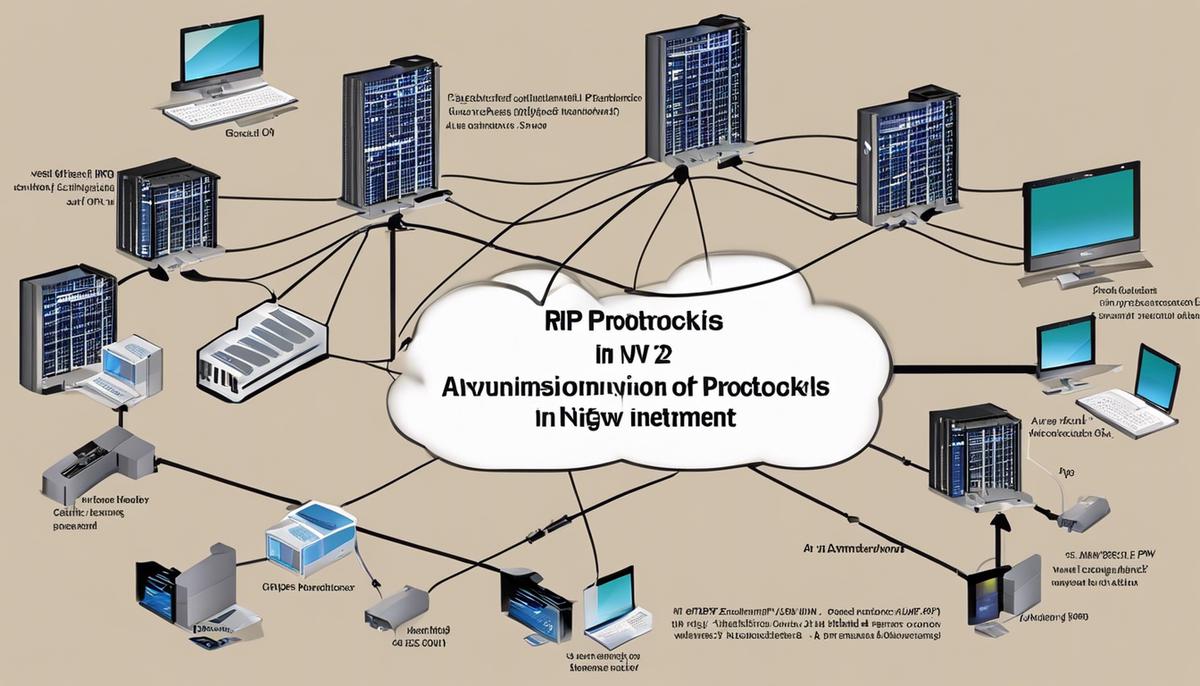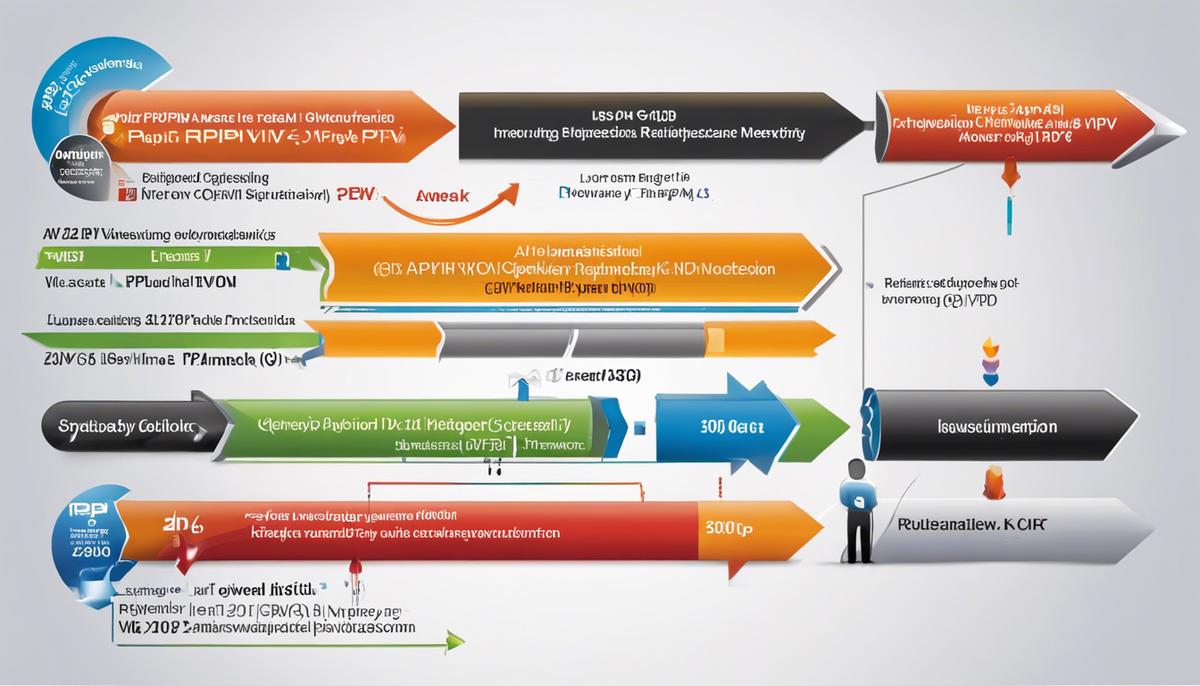In the interconnected world of today, the routing protocols used in modern networks play a critical role in ensuring smooth and efficient communication. Two such protocols, the Routing Information Protocol (RIP) and its improved version RIPv2, are noteworthy for their simplicity and widespread use. While no system is without its shortcomings, and RIP protocols are no exception, a comprehensive understanding of RIP and RIPv2’s functionalities, benefits and limitations can equip anyone with the knowledge they need to navigate the complex world of network routing protocols.
Understanding RIP and RIPv2
Unraveling the Mysteries of RIP and RIPv2: A Deeper Look into Routing Protocols
In the fascinating sphere of networking, the Routing Information Protocol (RIP) and RIPv2 are undoubtedly two of the most intriguing elements. These cornerstones of the internal gateway protocol (IGP) family are renowned for their role in exchange of critical routing information within an Autonomous System (AS). The primary goal here is providing a deeper understanding of these routing protocols, or more plainly, how data gets from point A to point B in a network.
Let’s begin with the basics – RIP. Introduced in the late 80s under RFC 1058, RIP is essentially a distance-vector routing protocol. Essential concepts to grasp here include the fact that RIP uses the hop count as a routing metric (keeping a limit at 15 hops) and implements the Bellman-Ford algorithm to calculate the best path for data packets. Moreover, RIP is a fundamental protocol that utilizes broadcast for routing information distribution. This was groundbreaking initially, no doubt, but inevitably, this dated tech does face its limitations in contemporary, sprawling network architectures.
Enter RIPv2, the aptly named successor and a significantly improved routing protocol. Launched in 1998 as per the technical specifications in RFC 2453, RIPv2 remedied key shortcomings in its predecessor. This newer protocol supports Classless Inter-Domain Routing (CIDR) and offers an increased address capacity. It also brought about the use of multicast instead of broadcasting, directing updates only to devices that require the info. Not forgetting, RIPv2 additionally bolsters security through the simple password authentication mechanism.
A key feature in both RIP and RIPv2 is their simplicity. Both protocols leverage identical timers: update timer (every 30 seconds), invalid timer (180 seconds), and flush timer (240 seconds). This consistent timing schedule plays a crucial part in maintaining stable networks by ensuring a swift discovery of link failures, albeit one must note the consequence: a relatively higher bandwidth usage.
Naturally, one can’t neglect the fact that both RIP and RIPv2 aren’t perfect. Their limited hop count can pose obstacles in expansive networks. Neither protocol takes account of network congestion or link speed when determining the best path. Moreover, they both put considerable demand on a router’s processor, and although RIPv2 makes an attempt at security, it’s still insufficient by today’s standards. Hence, it’s no surprise that modern networks often opt for advanced protocols such as OSPF and EIGRP.
Yet, knowing the ins and outs of RIP and RIPv2 remains crucial for any tech enthusiast. Knowing one’s history always provides a better handle on present and future advancements. It further broadens one’s understanding and appreciation of the intricate, constantly evolving world of networking protocols.
Indeed, continuous innovation and improvement is the driving force in technology. RIP and RIPv2’s contributions to networking are undeniable. They’ve served as the stepping stones to more complex protocols and have played a significant part in making the internet the connected network we know and love today. Let’s stay expectant and excited — who knows where our tech journey will take us next?

Advantages of Using RIP and RIPv2
Despite the aforementioned limitations of RIP and RIPv2 in our modern digital landscape, several key benefits persist, underscoring their continued relevance in network routing. Within this article, we will explore the invaluable attributes of RIP and RIPv2, and delve into areas that range from their inherent simplicity and robust nature, to their adaptability as static routing alternatives.
First, the underlying simplicity of RIP and RIPv2 serves as a major selling point. Both protocols have straightforward configurations that even novice network administrators can manage. Albeit, the lack of complexity can be perceived as a hindrance in more complex networks, there’s no denying that easy deployment fosters common adoption, particularly in smaller networks with limited resources.
Also not to be discounted is the dynamic routing capacity inherent to both RIP and RIPv2. As an improvement to static routing, these protocols can automatically adapt to network topology changes, increasing their value during network evolutions, expansions, or even general maintenance.
Furthermore, RIP and RIPv2 are robust. The protocols possess the ability to stabilize operations instantly when network links get disrupted. Their inherent robustness stems primarily from routing loops prevention mechanisms that counteract destructive routing feedback in the networks.
The ability to store multiple routes to a particular network destination stands as another key benefit of RIP and RIPv2. This mechanism provides load balancing, thus improving efficiency and data flow within the network.
Equally essential is the backwards compatibility that RIPv2 offers. Enabling co-existence with RIP, this backward compatibility ensures network efficiency doesn’t become compromised during the protocol transition phase from RIP to RIPv2.
Lastlty, RIPv2 does offer basic authentication measures. Even though it lacks advanced security features like encryption, the simple password authentication mechanism, often seen as elementary, can provide a rudimentary layer of protection, especially in smaller networks.
In conclusion, considering both RIP and RIPv2 as outdated protocols or reductive in the scope of today’s complex networking architectures would be a significant oversight. Their simplicity, adaptability, and robustness coupled with backward compatibility offer a distinct blend of attributes, undeniably contributing to the shaping of internet and networking technologies we witness today. Although it is critical to embrace more sophisticated protocols like OSPF and EIGRP in certain networking environments, the essence of understanding RIP and RIPv2 cannot be understated in acquiring a thorough grasp of networking principles.

Shortcomings of RIP and RIPv2
Deeper Dive Into RIP and RIPv2 Limitations
Continuing on from our exploration of the Routing Information Protocol (RIP) and its evolution to RIP Version 2 (RIPv2), now the focus shifts to a deeper understanding of their limitations. These regulations aren’t mere technical glitches but are deliberate design choices intended to address specific networking scenarios—mostly resource-constrained environments.
Rotating back to the analysis of these pioneering protocols, one inherent drawback is the slow convergence times. RIP, and by extension RIPv2, takes substantial time to converge due to the protocol’s built-in mechanisms—such as Split horizon, Route poisoning, and Hold-downs—which inadvertently delay the information propagation. Large networks with numerous routers are more prone to this delay. In the time it takes to reach convergence, data may still be sent along defunct paths, which can significantly affect overall network performance.
Another intriguing limitation is the unavailability of a hierarchical structure. Both RIP and RIPv2 fundamentally lack the capability to fundamentally understand and assign hierarchy. This is a significant shortcoming compared to later protocols like OSPF which support areas and backbone areas or EIGRP with autonomous systems – features that considerably elevate the routing efficiency.
Next on the list is RIP’s insensitivity to the quality of links which ties into the issue of hop count. While the metric’s simplicity is commendable, it often leads to suboptimal routes. RIP assumes all links are equal, disregarding link speeds or reliability. This simplicity may cause packets to traverse slower paths, leading to raised latency and jitter rates.
RIPv2’s advancements over RIP, while significant, fall short in an area that is paramount in this era of cyber threats — security. Yes, it introduced a simple password authentication, but it fails to provide sophisticated security measures to thwart modern threats. Compounded by the protocol’s use of plain text for password transmission, the pitfall in this crucial area is evident.
Another point to consider is the routing protocol’s scalability issue. With restrictive hop-count limits, supporting large complex networks is problematic. This limitation severely restricts the size of networks that can effectively implement RIP or RIPv2.
Lastly, RIP and RIPv2 are both classful protocols making them incompatible with Variable-Length Subnet Masking (VLSM). This limits flexibility in IP addressing, inevitably leading to wastage, of IP addresses in smaller subnets, making them far from ideal in today’s world where effective IP address management is of utmost concern.
It’s worth emphasizing that understanding these limitations is not just for theoretical knowledge. The insights they give can guide tech enthusiasts and professionals alike to make informed decisions about their network environment setups, wholly appreciating the evolution of routing protocols from RIP and RIPv2 to more advanced solutions. With this awareness, the tech community continues to work on enhancing these innovative networking solutions, getting ever closer to overcoming these limitations in the strive for optimal network design. The RIP and RIPv2 protocols definite stepping stones on the path toward the development of the internet, reminding us that even the most foundational technologies are not without their growing pains.

Contrasting RIP and RIPv2
RIPv2’s Performance Improvements
It’s no secret that RIPv2 brought a myriad of improvements over its predecessor. Many of these advancements directly increased RIPv2’s performance, enhancing its routing capabilities, and underpinning more stable network operations.
The introduction of Classless Inter-Domain Routing (CIDR) support in RIPv2 paved the way for subnet masks to be included with each route entry, showcasing a defeat over the boundaries of classful networks embedded in the original RIP. This CIDR support, while being revolutionary, also impacts the performance of RIPv2 by allowing infinite subnet possibilities in diverse network conditions, helping to maximize the efficiency of IP address utilization and formulating optimal routes.
Efficiency is taken one step forward in RIPv2 with its multicast routing advertisements, differing from RIP’s broadcasting mechanism. This facilitated a reduce in unnecessary network traffic and hardware processing, enhancing overall network performance and efficiency by only appealing to devices requiring this information.
An increased address capacity also acts as a performance booster, particularly in larger network structures. RIPv2’s support for larger address spaces helps sustain growth in increasingly complex networks by handling more substantial address pools. This makes RIPv2 more scalable, meeting the demands of expanding network architectures with fewer constraints.
Security enhancements in RIPv2, encompassing simple password authentication, impart stability in routine operations. Although this security measure might appear basic, especially when compared to later protocols, it did contribute to reducing potential disruptions facilitating improved performance through network stability.
The backwards compatibility feature in RIPv2 ensures seamless integration with older RIP versions running in the same network. This attribute means an operating network does not need to be overhauled when introducing RIPv2, offering smooth migration and maintain network performance.
To wrap things up, it’s clear that RIPv2 improves on RIP by not only offering advanced features such as CIDR support, multicast routing, larger address capacity, and simple password authentication, but also by directly impacting performance, contributing to network stability and efficiency. That being said, both versions possess an irreplaceable position in the architecture of the Internet, each serving as important milestones in the evolution of routing protocols and networking essentials. Newer protocols may manifest with their unique attributes, but fundamental knowledge of RIP and RIPv2 remains quintessential for anyone delving into the ocean of networking. The simplicity, robustness, and dynamic routing capacities of these protocols continue to illustrate their influence in the field.

Current Use & Future Perspective of RIP and RIPv2
Exploration of what the future holds for RIP and RIPv2
When considering the practical reality of RIP and RIPv2 in modern networking, it’s apparent that these protocols are less relevant in contemporary high-speed, large-scale networks. Their limitations including scalability issues, plaintext password transmission, insensitivity to link quality, and more importantly, the maximal hop counts have made them less attractive in current networking scenarios. Yet, these protocols continue to hold academic and historical significance.
While the implementation of these protocols isn’t standard in most modern networks, they still exhibit peculiar strengths. Their simple configurations, dynamic routing capabilities, and robustness in stabilizing operations underscore their importance in learning fundamental routing principles. Moreover, their contributions to the evolution of internet architecture cannot be ignored.
The advent of advanced routing protocols such as OSPF and EIGRP offering superior route selection, improved loop prevention mechanisms, rapid convergence times, and scalability often eclipse the mention of RIP and RIPv2. Yet, diverging from the notion that RIP and its successor are becoming obsolete, some studies suggest that RIP might find a new lease of life in IoT (Internet of Things).
Against the backdrop of resource-constrained devices in IoT, the simplicity and low computation of RIP protocols offer potential advantages. However, security concerns and lack of hierarchical structure might be a deterrent in its widespread adaptation in the IoT domain.
Furthermore, there’s a compelling argument that RIP and RIPv2 would continue to linger in legacy systems and in some remote network regions where link speed and network congestion aren’t a concern.
The future holds a vast sea of possibilities for these protocols. A few experts argue for a significant overhaul of RIP and RIPv2 to make them suitable for futuristic technologies like IoT, while others suggest the gradual phasing out of these protocols from the networking narrative.
Whichever way the future sways, RIP and RIPv2 remain critical landmarks in networking’s past and hold key lessons for network engineers and enthusiasts moving forward. Their study not only offers a glimpse into the history of networking’s evolution but also reinforces the understanding of networking principles and protocol design.

While RIP and RIPv2 have been pivotal in shaping the network communication landscape, they aren’t without their fair share of drawbacks. However, their simplicity and low demand on network resources make them a valuable tool in networks operations. As technology continues to advance, we can anticipate significant improvements to these protocols or the advent of new, more efficient protocols that supersede RIP and RIPv2. Nonetheless, a deep understanding and appreciation of RIP and RIPv2 serve as a solid foundation for anticipating the future of network routing protocols.

